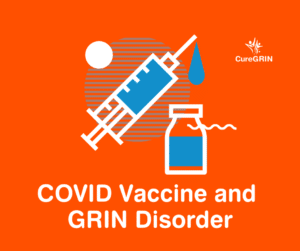Essential Question 3: Is a cure possible at any age?
Share This Post

Each Thursday throughout the summer, CureGRIN will be sharing a blog post that summarizes one of the 10 “Essential Questions” that need to be answered in order to find cures and treatments for GRIN Disorder. These questions are a central component of our recently unveiled Research Roadmap titled, “Treat the Symptoms. Cure the Disease.” You can find links to all of these blog posts here.
Today, we focus on Essential Question 3: Is a cure possible at any age?
We do not know exactly how or when interventions must be administered for GRIN and other GRI patients to have big improvements. Will a cure only be possible for young children or teens and adults too? In a study published in 2020, Dr. Amy Ramsey, a member of CureGRIN’s Scientific Advisory Board, and her team tested this question on mice with a GRIN1 mutation.
Specifically, Dr. Ramsey and her team developed a mouse model where adult GRIN1 loss-of-function mice could be “rescued” to wild-type using a gene editing technique with a type of on/off switch. This technique (called Cre recombinase) is unique to mice and gives researchers control over the timing and location of gene expression. This approach allowed the researchers to turn the mutation off when the mice reached adulthood and resulted in an increase in the level of NMDARs in the GRIN1-rescue mice. The GRIN1-rescue mice were able to gain strength, become more social, and perform cognitive assessments comparably to wild-type mice born with typical levels of GRIN1 gene expression. Therefore, this study suggests that developmental changes in NMDAR expression levels can be reversed and that this reversal can occur in adulthood. This means that even after the brain has completed development, there is the possibility for brain functioning to be restored.
Additional studies may be performed in the future on mice with variants in other genes and human patient variants to better understand if these other types of variants can also be restored in adulthood. Since this particular study was done in mice, more research also needs to be done to determine if the changes in the human brain of GRIN and other GRI patients can be cured at any age. Further research should be performed to address the questions of whether the deficits in the brain altered the circuitry permanently and has the human brain wired around deficits in such a way that reversal has unanticipated results? CureGRIN will be working with scientists and biotechnology companies around the world to explore the answers to these questions.
To learn more about the research study mentioned above, check out the article here , read our blog post and watch our video interview with Dr. Ramsey and Dr. Catharine Mielnik.
Read more Posts

Meet CureGRIN’s Newest Board Member – Heather
Meet CureGRIN’s newest board member, Heather Cartwright.

Should people with GRIN Disorder be vaccinated for COVID-19?
With countries around the world beginning to roll out the COVID-19 vaccine, some parents are wondering whether they should vaccinate kids with GRIN Disorder. So, we asked doctors who treat our kids for advice.
